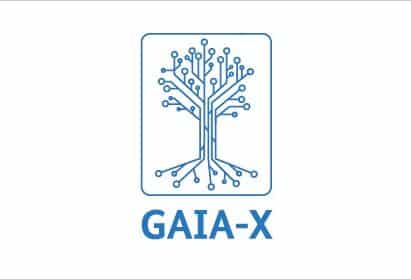Imagine a secure cloud landscape that functions completely independently of large American corporations. Imagine clouds whose stored storage space and computing power are located entirely in Europe. These are able to comply with the European data protection rules and, in particular, the GDPR.
This is one of the aims of the large-scale "GAIA-X" project. A total of 22 German and French companies launched the project in 2019. The number of participants is constantly increasing. But what exactly is behind it and what does the new digital infrastructure offer?
What is behind GAIA-X?
In October 2019, Federal Economics Minister Peter Altmaier presented the "GAIA-X" project - named after the goddess of the earth - at the Digital Summit. Behind this is a Merger of several European companieswho want to link their server capacities with each other or have already started to do so. These include, for example, large companies such as Siemens and SAP as well as medium-sized service providers such as ODN and ITSMedia, which have been involved since the very beginning. They form a non-profit association with no intention of making a profit.
In addition to over 200 companies, there are now a number of supporters from the German government, industry and science. At the beginning of 2021, the Federal Ministry of Economics announced that it intends to invest 190 million euros in "GAIA-X".
GAIA-X is a Network of diverse cloud service providerswhich are designed to offer user-friendly, secure and trustworthy services. Applications based on GAIA-X should make it possible to exchange data volumes across national borders in different sectors. This creates a large data infrastructure from existing centralized and decentralized data networks. GAIA-X offers suitable interfaces for this, in which companies can combine their clouds.
But what is the purpose of this mega-project? We summarize the goals for you.
These are the big goals
One major goal is a Open, digital infrastructure in Europe that brings data together and makes it securely available. Basically, any company or organization can participate in order to expand the cloud network. By networking small and medium-sized companies in particular, GAIA-X aims to continue to grow and ensure the digital competitiveness of European companies. But GAIA-X can do much more.
Get an overview of the objectives:
- European values: Open source approach based on European values such as transparency and openness
- New data rooms in Europe: Building your own digital ecosystem
- Data protection: Compliance with high safety standards
- Trust: Confidential sharing of data in an independent data network
- Digital sovereignty
- Reduce dependencies: Prevention of possible system failures and data protection gaps through independence from American and Chinese cloud giants
- More storage space and computing power for private individuals and companies.
- Innovations in companies.
- Value creation and employment in Europe.
- Fair and open cloud solutions around the world.
- Global competitiveness in digitization.
- Digitization in public administration
- User friendliness: Creation of simple and user-friendly applications
Useful applications
Admittedly, it is not trivial to understand GAIA-X in its entirety at first glance and to recognize all the associated possibilities. For this reason, we take a look at possible application scenarios.
Examples of GAIA-X in the healthcare sector
In addition to Industry 4.0, smart living, public administration, agriculture and finance, GAIA-X offers many opportunities in the field of healthcare. Many companies are currently registering for the mammoth project with potential solutions relating to the coronavirus pandemic.
Imagine, for example, if there was a central and intelligent crisis platform on which all real-time data on coronavirus cases, patient information, intensive care bed occupancy and vaccinations were reliably and completely collated. This could be accessed by the health authorities, stakeholders from research, politics or public administration in order to obtain a significantly better database for decision-making.
Incidentally, GAIA-X does not necessarily require a pandemic.
Did you know, for example, that many patients in hospitals regularly suffer kidney failure, which is often not recognized early enough? Unfortunately, facilities very often struggle with this problem. The reason for this is that patient and laboratory data are often not networked and are collected at different wards or by different doctors. An alarm system based on artificial intelligence would make it possible to exchange data and thus put an end to the underlying data problem.
We now take a look at the various scenarios in the economy and in public life.
Application scenarios from the business world
Many companies in Europe offer impressive products, business models and innovations. Now imagine that some of them are better connected.
One possibility, for example, is shared production. Several companies could access cross-company production and make much better use of resources. This could start with the shared use of a welding machine, for example, or the entire production of an electric car.
Networking an entire machine fleet with component manufacturers and machine builders also has great potential. This would allow those involved to further optimize the systems used in the long term.
Examples of GAIA-X in public life
Data exchange between public institutions often fails because there are no common standards or they are unable to comply with data protection regulations. GAIA-X counteracts these usually decisive stumbling blocks.
Think of our traffic systems, for example. Whether public transport, freeways, traffic light systems or the vehicles themselves - traffic flow could be significantly optimized with intelligent and networked traffic control. An optimized mobility system could, for example, reduce traffic jams and get people from A to B even faster - and ideally also be more environmentally friendly.
Public administration and citizens can also benefit. Networked offices could use chatbots to offer citizens the opportunity to submit applications or answer questions around the clock.
Or imagine intelligent buildings that are based on AI and are interconnected. These would be able to save energy and improve the living conditions of residents.
The next steps
Whether Smart City, Smart Living, Industry 4.0, mobility, environmental protection or aerospace - as you can see, the fields of application for GAIA-X are very diverse.
The German government is currently offering companies a funding competition that will run until the end of 2024. Companies with useful applications can receive between 10 and 15 million euros for their projects.
Does the project sound interesting to you? Then you can obtain further information at: GAIA-Xdirectly on the website of the Federal Ministry for Economic Affairs and Energy (BMWI).
It will definitely be exciting to see how GAIA-X will shape the digital infrastructure in Europe and how the digital future will develop in the long term.




